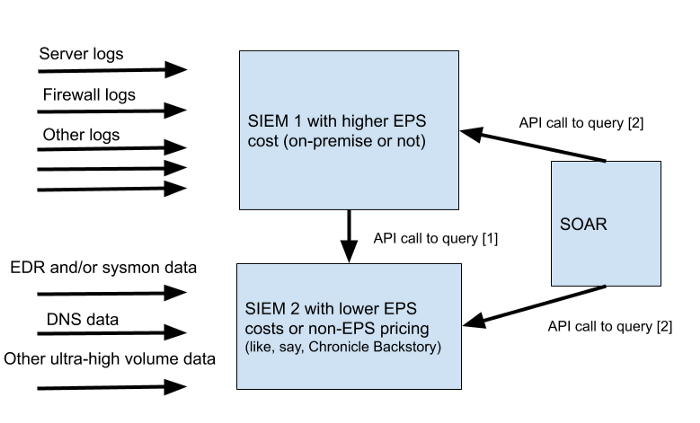
It looks creepy, but sometimes this architecture works in production. Complexity kills security, and generally kills everything. In fact, for such cases (I'm talking about lowering the cost of ownership) there is a whole class of systems - Central Log Management (CLM). Writes about this Gartner , considering them undervalued. Here are their recommendations:
- Use CLM capabilities and tools when there are budget and personnel constraints, security monitoring requirements, and specific use case requirements.
- Implement CLM to extend the collection and analysis of logs when a SIEM solution is too expensive or complex.
- Invest in CLM tools with efficient storage, fast retrieval, and flexible visualization to enhance security incident investigation / analysis and threat search support.
- Ensure that applicable factors and considerations are considered before implementing a CLM solution.
In this article, we'll talk about the differences in licensing approaches, deal with CLM and talk about a specific system of this class - Quest InTrust . Details under the cut.
At the beginning of this article, I talked about a new approach to Splunk licensing. Licensing types can be compared to car rental rates. Let's say the CPU model is a fuel efficient car with unlimited mileage and gasoline. You can go anywhere without distance restrictions, but you cannot go very fast and therefore drive many kilometers a day. Data-based licensing is similar to a sports car with a pay-per-mileage model. You can famously pile on long distances, but you will have to pay more for exceeding the daily mileage limit.

To benefit from using load-based licensing, you need to have the smallest possible ratio of CPU cores to download GB of data. In practice, this means something like:
- .
- .
- ( CPU ).
The most problematic thing here is normalized data. If you want SIEM to be an aggregator of all the logs in an organization, it takes a lot of parsing and post-processing effort. Do not forget that you also need to think over an architecture that will not fall apart from the load, i.e. additional servers will be required, and therefore additional processors.
Volume licensing is based on the amount of data that is sent to the SIEM jaws. Additional data sources are punishable by the ruble (or other currency) and this makes you think about what you didn't really want to collect. To trick this licensing model, you can bite into the data before it is injected into the SIEM system. One example of such pre-injection normalization is Elastic Stack and some other commercial SIEMs.
As a result, we see that licensing for infrastructure is effective when you need to collect only certain data with minimal preprocessing, and licensing by volume will not allow you to collect everything at all. The search for an intermediate solution prompts the following criteria:
- Simplification of data aggregation and normalization.
- Filters noise and least important data.
- Providing analysis capabilities.
- Sending Filtered and Normalized Data to SIEM
As a result, target SIEM systems do not need to spend additional CPU power on processing and can benefit from identifying only the most important events without reducing the visibility of what is happening.
Ideally, such a middleware solution should also provide real-time detection and response capabilities that can be used to mitigate the impact of potentially harmful actions and aggregate the entire flow of events into a convenient and simple data slice towards SIEM. Well, then SIEM can be used to create additional aggregations, correlations and notification processes.
That mysterious intermediate solution is nothing more than the CLM that I mentioned at the beginning of the article. This is how Gartner sees it:
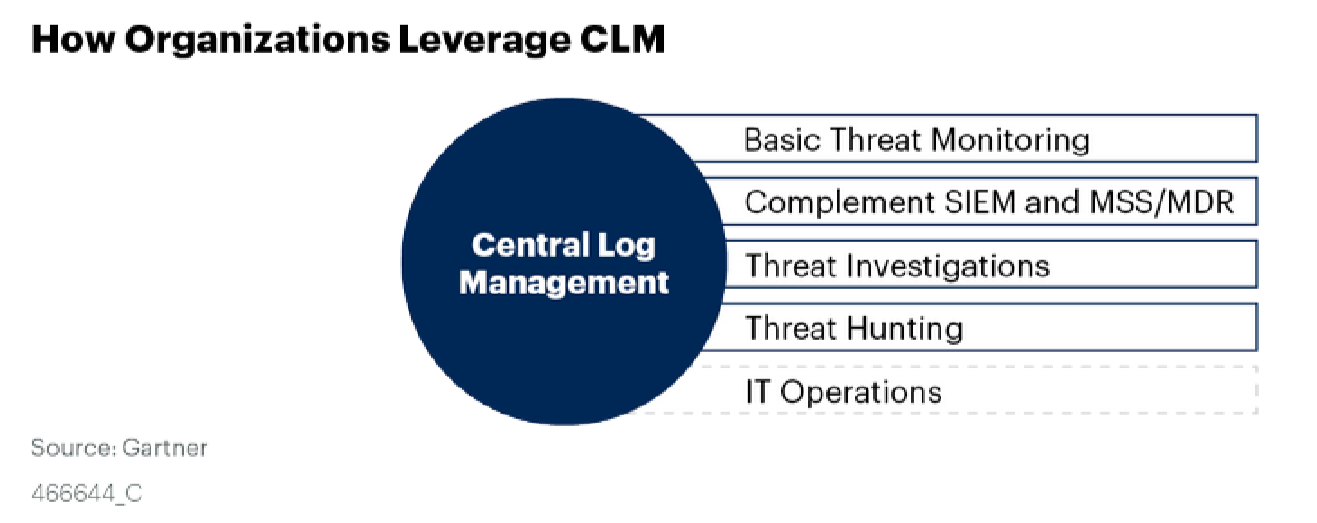
Now you can try to figure out how InTrust complies with the Gartner recommendations:
- , .
- .
- — , CLM, BI- .
- ( ).
Quest InTrust uses its own storage system with up to 40: 1 data compression and high deduplication rates, which reduces storage overhead for CLM and SIEM systems.

IT Security Search console with google-like search
A specialized module with the IT Security Search (ITSS) web interface can connect to event data in the InTrust repository and provides a simple interface for searching for threats. The interface has been simplified to the point that it works like Google for event log data. ITSS uses timelines for query results, can combine and group event fields, and is effective in helping you find threats.
InTrust enriches Windows events with SIDs, file names, and SIDs. InTrust also normalizes events to a simple W6 schema (Who, What, Where, When, Whom, and Where From - who, what, where, when, who and from where) so that data from different sources (native Windows events, Linux logs or syslog) could be seen in a single format and on a single search console.
InTrust supports real-time alerting, detection and response functions that can be used as an EDR-like system to minimize damage caused by suspicious activity. Built-in security rules detect, but are not limited to, the following threats:
- Password-spraying.
- Kerberoasting.
- Suspicious PowerShell activity, such as executing Mimikatz.
- Processes such as LokerGoga ransomware are suspicious.
- Encryption using CA4FS logs.
- Logins with a privileged account on workstations.
- Password guessing attacks.
- Suspicious use of local user groups.
Now I will show you some screenshots of InTrust itself, so that I can get an impression of its capabilities.
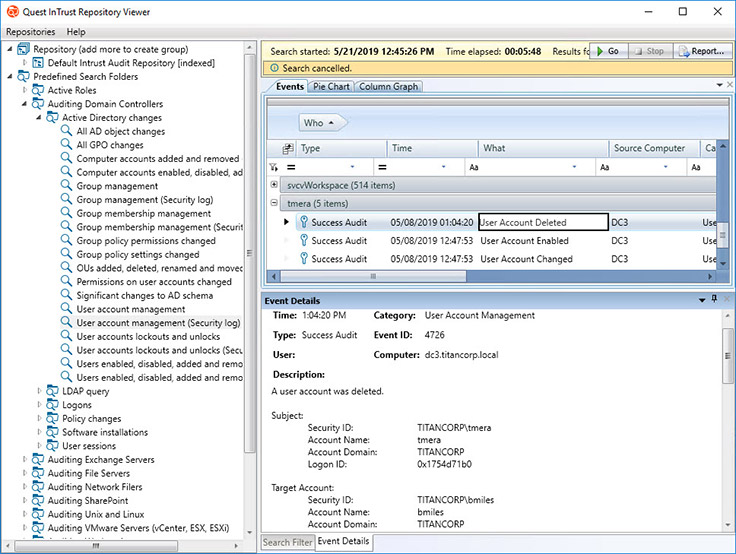
Predefined filters to search for potential vulnerabilities
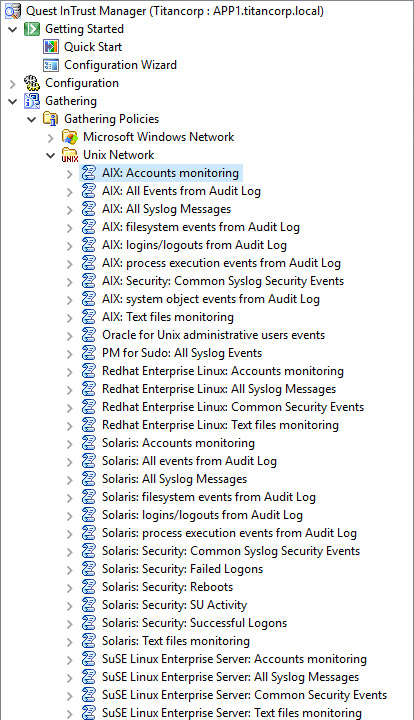
Example of a set of filters for collecting raw data
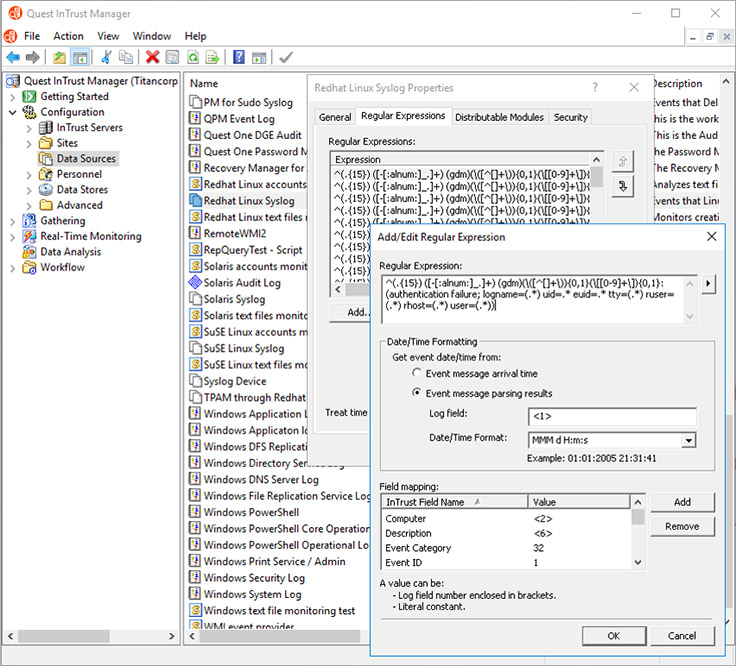
An example of using regular expressions to create a reaction to an event
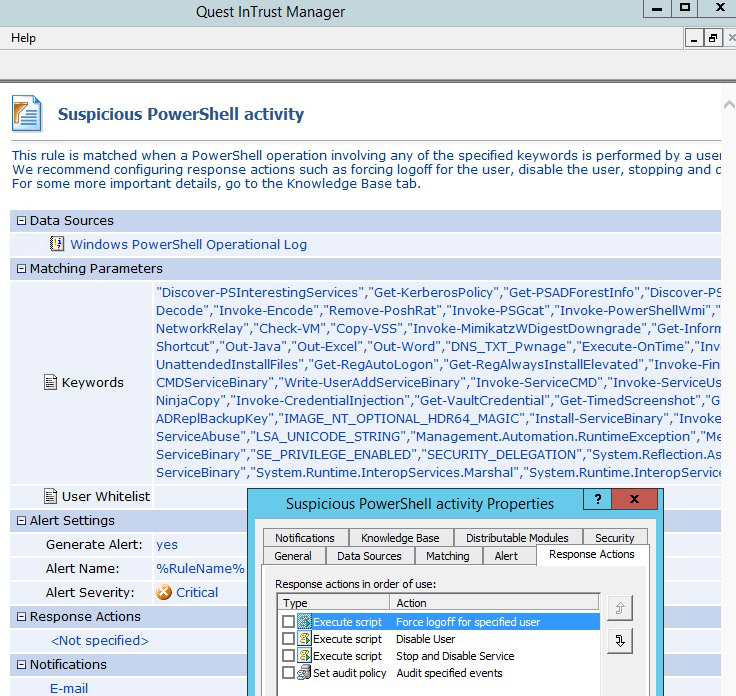
PowerShell Vulnerability Search Rule Example
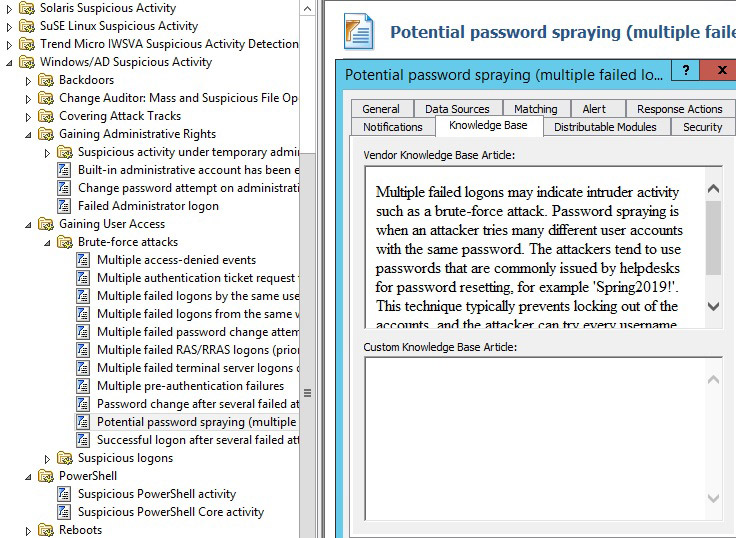
The built-in knowledge base with descriptions of vulnerabilities
InTrust is a powerful tool that can be used both as an independent solution and as part of a SIEM system, as I described above. Probably the main advantage of this solution is that you can start using it right after installation. InTrust has a large library of rules for detecting threats and responding to them (for example, blocking a user).
In the article, I did not talk about boxed integrations. But right after installation, you can configure sending events to Splunk, IBM QRadar, Microfocus Arcsight or via a webhook to any other system. Below is an example of a Kibana interface with events from InTrust. Elastic Stack already has integration, and if you are using the free version of Elastic, InTrust can be used as a tool for detecting threats, performing proactive alerts and sending notifications.
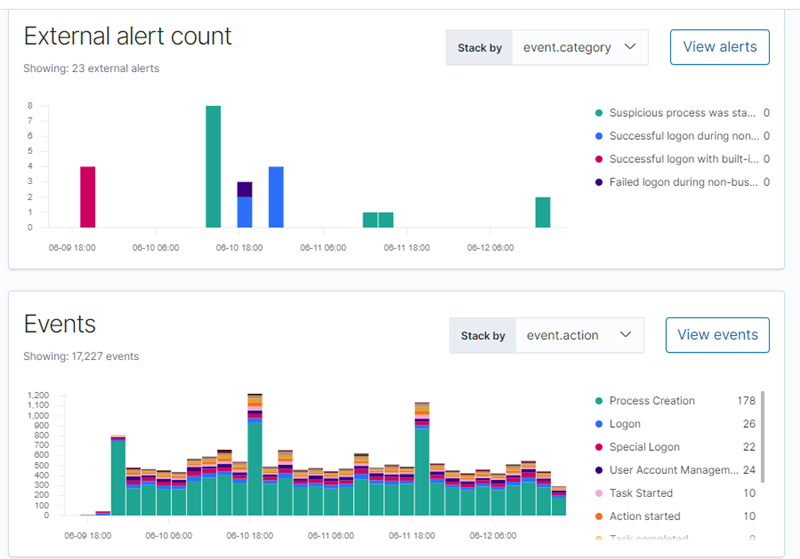
Hopefully the article has given a minimal introduction to this product. We are ready to give InTrust to you for a test or to conduct a pilot project. The application can be left in the feedback form on our website.
Read our other articles on information security:
Identifying a ransomware attack, gaining access to a domain controller and trying to resist these attacks
What is useful to get from the logs of a Windows workstation (popular article)
Tracking the life cycle of users without pliers and duct tape
Who did it? We automate information security audit
Subscribe to our page on Facebook , we publish there short notes and interesting links.